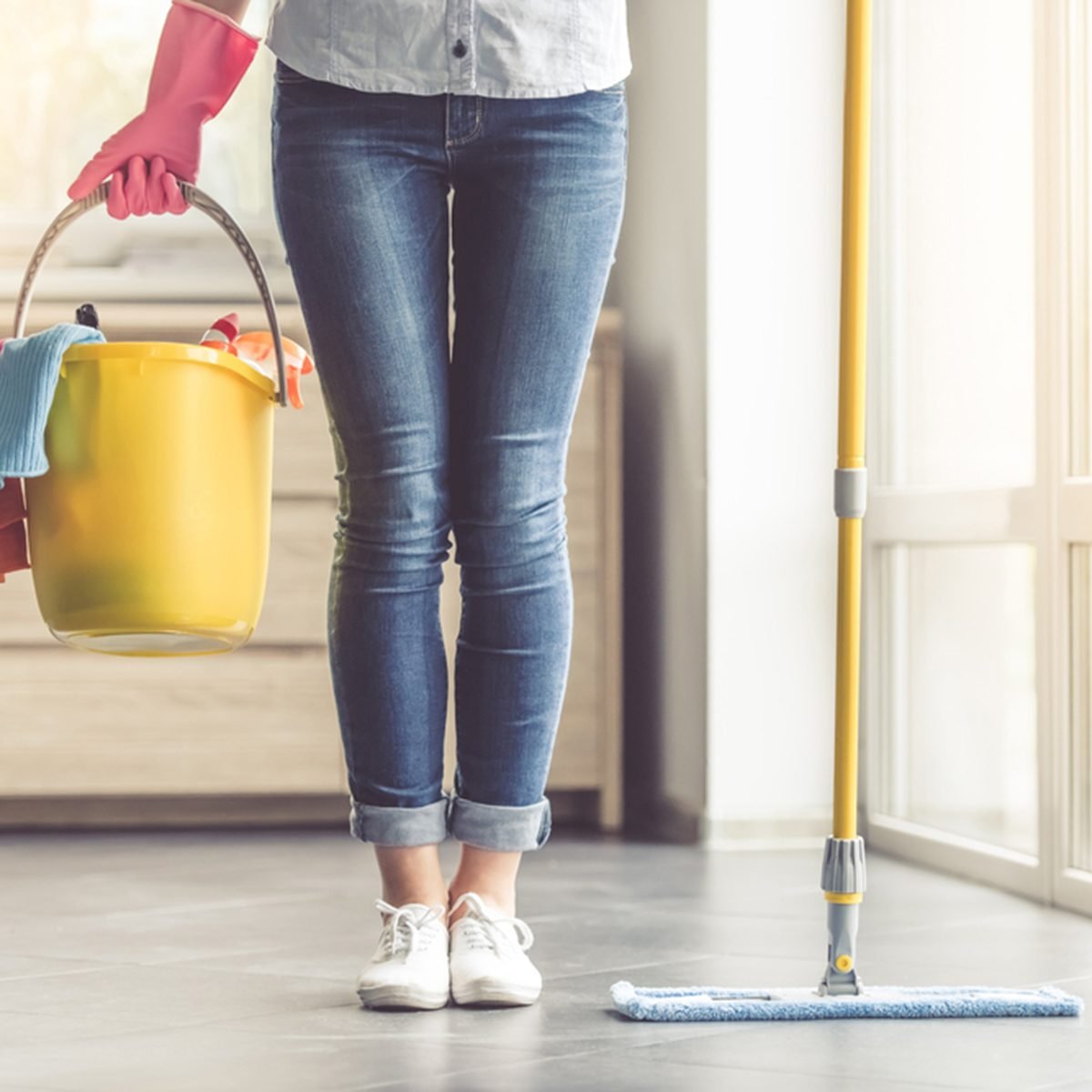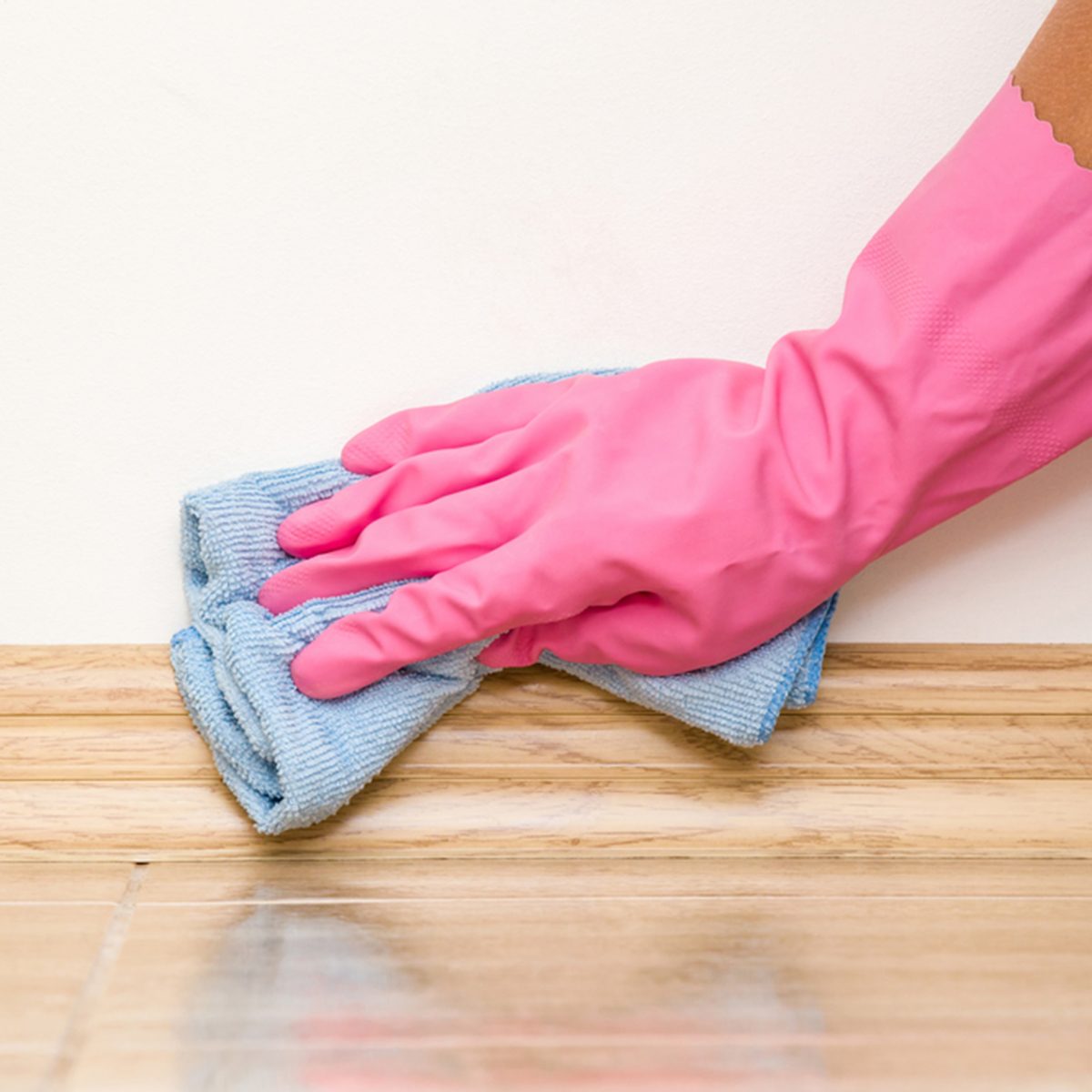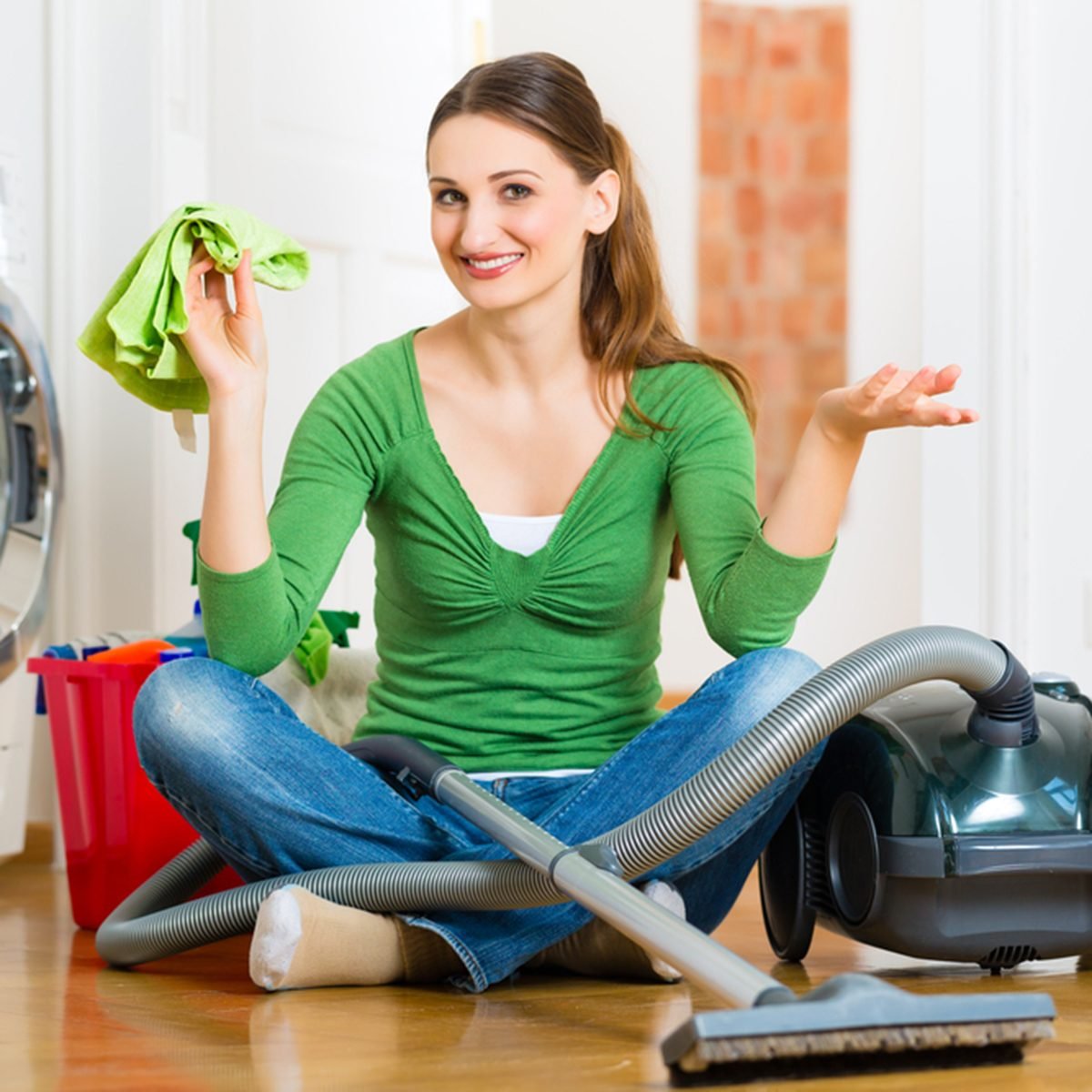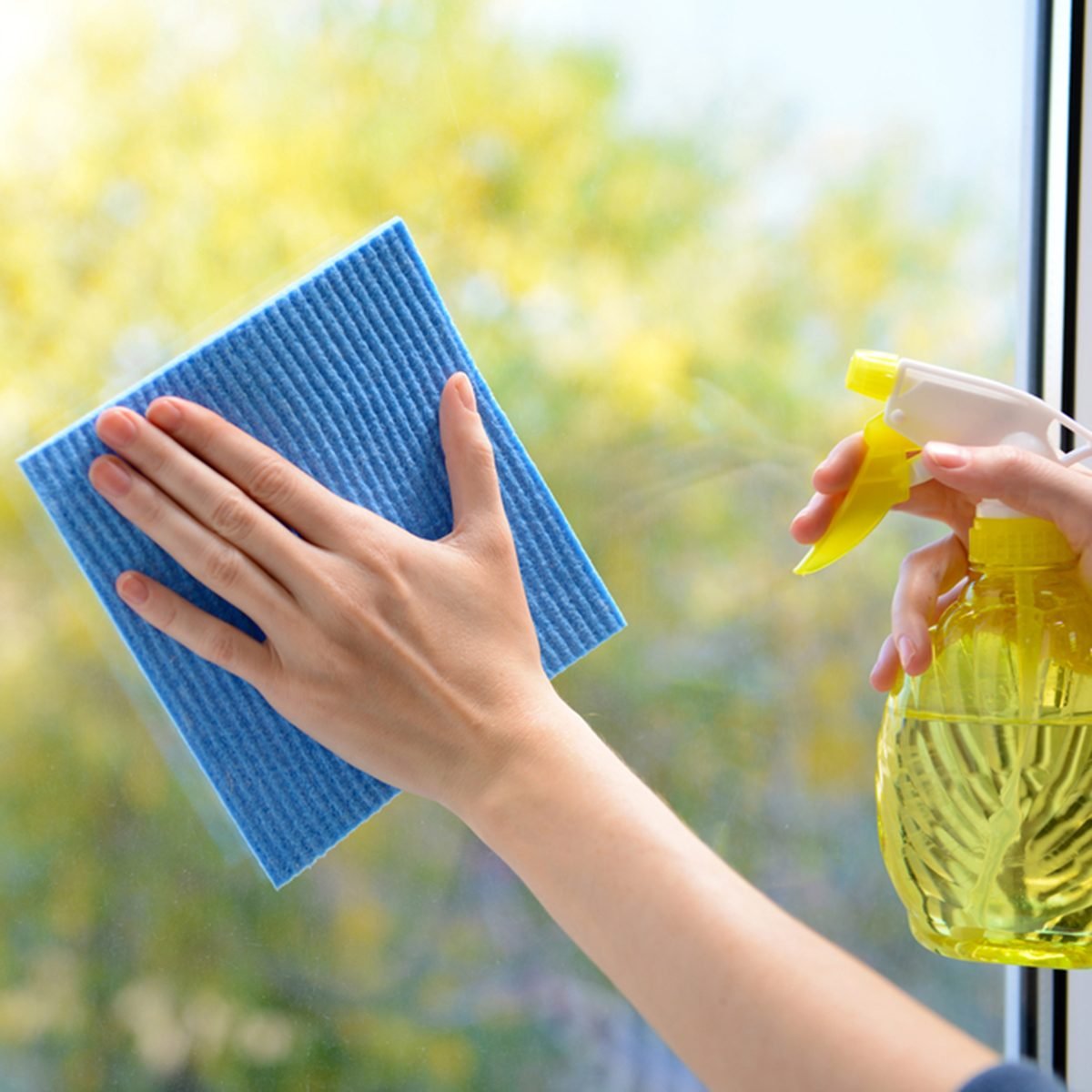
Call me strange, but one of my favorite things to do on a Sunday morning is get up early, pour a steaming hot mug of coffee (like one of these yummy Starbucks copycats) and clean my entire apartment. Despite checking off everything on my cleaning list each week, I had no idea that some of the ways I was cleaning—from washing dishes to doing laundry—were actually making my stuff way, way dirtier. Next time you’re tidying up, avoid making these common cleaning mistakes and follow these fixes instead.

Mistake 1: Using the Same Rag Around the House
Why it’s dirty: Despite spritzing it with a cleaning solution, when you use the same rag in multiple spots around the house the rag hangs on to the grime from the previous surface and spreads it to whichever surface it touches next. That means bathroom germs get wiped onto kitchen counters, the living room coffee table and anywhere else that cloth is used.
How to fix it: Use a new sheet of paper towel for each surface cleaned, or have a microfiber cleaning cloth designated for each area of your home. Microfiber cleaning cloths can be tossed in the laundry or thoroughly washed after each use to remove gunk or grime.

Mistake 2: Using a Feather Duster
Why it’s dirty: No matter how much the advertisements for these dusters say the feathers “trap and lock dust,” they don’t. Feather dusters are notorious for spreading dust around a surface or pushing it off to fall to the ground, rather than removing it.
How to fix it: Use a microfiber cleaning cloth or a disposable paper towel with an appropriate cleaning solution, depending on the surface being dusted.

Mistake 3: Not Cleaning the Vacuum
Why it’s dirty: When a vacuum filter hasn’t been changed or cleaned in a while, not only is the vacuum unable to pick up as much dirt and dust as it should, due to decreased suction, but dirt also is blown back into the air and carpet by the dusty vent.
How to fix it: Change or empty vacuum bags or canisters immediately after they become full. Wipe vacuum attachments, the hose and the vent with either a damp microfiber cleaning cloth or a moist paper towel, double-checking that the vacuum is unplugged first.

Mistake 4: Tossing Any Kitchen Tool into the Dishwasher
Why it’s dirty: Smaller kitchen tools like a garlic press, zester or cheese grater have small nooks and crannies that a dishwasher isn’t always able to blast. When food is left in these tools, it can become moldy and get into food the next time it is used.
How to fix it: Skip the dishwasher and wash by hand with dish soap and hot water, paying particular attention to corners and small holes.

Mistake 5: Placing a Toilet Brush Back into Its Holder Immediately
Why it’s dirty: If a toilet brush is put right back into its holder right after use, the moisture and germs from the toilet get trapped in the container and the brush, where they breed and multiply. These germs are then rubbed back into your toilet the next time the brush is used.
How to fix it: After scrubbing, allow the toilet brush to dry completely before returning it to its holder.

Mistake 6: Skipping the Sink
Why it’s dirty: Whether it has a standard drain or a garbage disposal, sinks rapidly grow germs and bacteria due to being a moist environment where food particles tend to get stuck. This issue is compounded when food or standing water is left in the sink, the drain or the garbage disposal.
How to fix it: Wipe down the sink after each use and use these baking soda cleaning tips weekly to rid the drain and garbage disposal of germs. You can also give your garbage disposal a good clean with our Test Kitchen favorite cleaner.

Mistake 7: Cleaning from the Ground Up
Why it’s dirty: When sweeping, mopping or vacuuming the floor before cleaning the furniture, dust and crumbs fall from tables, counters and shelves, requiring you to re-clean the floor.
How to fix it: Clean a room from the top down. Start with windows, working down to tables and counters, chairs and couches, side and coffee tables, ending with the floor.

Mistake 8: Spraying Cleaner Directly on a Surface
Why it’s dirty: Spraying a cleaner directly onto furniture, countertops or glass can cause a buildup of the solution, leading to greasy furniture and surfaces, and streaky windows. This also could cause dirt and dust to stick to them more firmly.
How to fix it: Spray cleaning solution on a microfiber cleaning cloth or disposable paper towel, then wipe down surfaces.
Looking for a good all-purpose cleaner? We’ve got you covered.

Mistake 9: Not Cleaning the Washing Machine
Why it’s dirty: The skin cells, dust mites and stains from clothes can linger in a washing machine drum as well as on the lid or door and detergent dispenser. This leads to washing clothes in dirty water, and eventually they’ll turn stinky.
How to fix it: For a top-loading washer, start it on its longest and hottest wash setting. When the drum is nearly full of water, pour in 1 liter of vinegar and 1 cup of baking soda, leaving the lid open and allowing the mixture to sit in the paused cycle for at least an hour. While the cycle is paused, clean the lid and any other visible nooks and crannies. Close the lid, allowing the wash cycle to run. Repeat vinegar and baking soda wash, if needed, then wipe down the inside of the washer and leave the lid open to allow the washer to dry completely.
For a front-loading washer, pour a solution of 1/4 cup each baking soda and water into the detergent compartment and pour 2 cups of vinegar into the drum. Set your machine to the hottest temperature and let it do its thing. When the cycle is over, wipe the drum clean, along with the door, detergent compartment and exterior. Pay extra attention to the gasket. Remember to leave the door ajar between loads for the best air circulation.

Mistake 10: Washing a Cutting Board with Dish Soap
Why it’s dirty: While dish soap and hot water remove visible food residue from a cutting board, the cuts in wood and plastic cutting boards trap microscopic food particles. These breed bacteria that transfer to any foods you prepare on that cutting board.
How to fix it: Don’t put it in the dishwasher! A wooden cutting board can warp and crack, while a plastic cutting board can melt in the hot water and steamy environment of a dishwasher. Instead, soak your cutting boards in hydrogen peroxide or a bleach solution (2 tablespoons of bleach and 1 gallon of water), rinse with water and dry completely.
Remember these easy cleaning swaps, and next time you’ll be cleaning smarter, not harder.
The post 10 Cleaning Mistakes That Are Actually Making Your Home Dirtier appeared first on Taste of Home.
Caroline Stanko